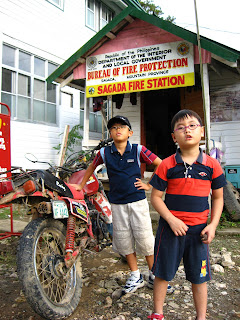Despite the gloom in Malaysia’s economical outlook, heritage aficionados and museum goers might have plenty to cheer for in 2009. Grabbing the headlines are new museum openings and they should provide some excitement and more importantly, generate impetus for a more heritage conscious society.
Based on reports from main dailies, there are 3 new museums in the pipeline and a further two including the national museum at its final stage of refurbishing.
According to the Museum Department Director General, Ibrahim Ismail, two museums – the
Malaysian Textile Museum and the
Natural History Museum will open its doors to visitors by the middle of the year.
The textile-themed museum, as I best recalled, was a brainchild of Pak Lah’s late spouse, Datin Seri Endon. She had vigorously promoted and encouraged batik –a traditional Malay textile art form- as mainstream fashion and an icon of Malaysian creativity, much to chagrin of the Indonesians.
Needless to say, with such strong backers for the project, it is no surprise to see KEKWA playing a huge role in this museum.
Its venue will be at the Moorish designed building which formerly housed Kraftangan, next to Sultan Abdul Samad Building. My guess is that a substantial portion of the exhibition will be devoted to
Batik legacy. According to the DG, there will be a gallery to showcase Baba Nyonya fashion heritage but in my view, the gallery comes amidst too little and too late.
Malaysia found its tail caught between its legs in a race with our southern neighbors across the causeway to ride on the popularity of the Baba Nyonya heritage. Singapore has not only beaten us in 2008 by setting up a Peranakan Museum in the island republic but adding salt to injuries, a major portion of its collection were bought from Penang! (
For more about this, please read “Cultural Coup by Singapore Peranakan Museum” posted on April 24, 2008)
In Putrajaya, work on the new Natural History Museum is progressing well and is expected to receive its first visitors in the second quarter of the year. The multi-million ringgit museum will be the showpiece of Malaysia’s natural richness and lauded by its founders to rival the best in the world.
A symposium in 2008 on the museum generated a lot of excitement amongst Malaysian scientists because many shared the view that the establishment of the museum is not just timely, but perfect as a springboard for those who keen to know our rainforests.
After a two-year hiatus,
Muzium Negara and its four main galleries now come with new DNA for their exhibition themes. The revamp was a question of life and death for the national museum. It needed quick remedy to maintain its role as the nation’s leading repository and to safeguard its relevance to the Malaysian public. The RM20 million major facelift was the first for the national museum since its inception in the early 60s.
The reviews so far have remained surprisingly silent but I am fascinated with what I have discovered from my recent visits to the new Galleries D, C and A.
Despite my concerns with some of exhibition themes, the new galleries are ushering a new wave of museuology and exhibition designs in this country. Gone are the old musty feel and depressing displays that plagued so many of the galleries in Malaysian museums.
The newer versions entice visitors with an array of fascinating Malaysian spectrums and history through bold and captivating display and dioramas. Each theme takes you across well researched subjects and issues spanning millenniums, from the cave men dwelling in Niah to colonialism and to Proton cars.
Interestingly, 2nd quarter of the year will be a busy time for museum calendar.
Bank Negara is also joining the fray with a new
Numismatics Museum. The old Muzium Bank Negara has shut dpwn since July 2008 and in its place, a completely new establishment is expected to open its doors in July 09.
This central bank initiated project will have a new home within the vicinity of the former Prime Minister Office in Bukit Perdana. It is purported to be larger than its predecessor in Bank Negara and comes equipped with interactive exhibits.
Up north, renovation work spearheaded by Jabatan Muzium at
Taiping Museum is expected to be completed around the same time. According to the curator, there will be new facade, flooring and cutting edge exhibitions set to thrill visitors when they visit the oldest museum in Malaysia. (
pls read article “Taiping Museum To Be Revamped - Dec 1, 08”)Nevertheless, with all sectors of the economy coming to a gridlock, it is not surprising if heritage related development and conservation efforts for the coming months take a backseat in the government list of priority. However for the meantime, these museum openings will cast a welcome rainbow for the country’s heritage scene.
 All flights on this former Portuguese enclave depend on this single elevated runway built just a few meters above the Pearl River Delta.
All flights on this former Portuguese enclave depend on this single elevated runway built just a few meters above the Pearl River Delta.



















 Perch high in the mountainous regions of the Philippines Cordilleras is reputedly the World’s Smallest Fire Station.
Perch high in the mountainous regions of the Philippines Cordilleras is reputedly the World’s Smallest Fire Station.


